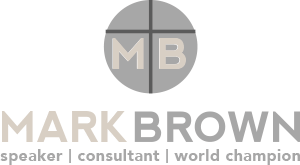“My speech is too long, but I really want the audience to hear everything I have to say!” That’s a sentiment that many speakers have expressed…particularly contestants in the Toastmasters International Speech Contest, who MUST adhere to the time limit of [7:30] or face disqualification. Unfortunately, disqualifications have occurred several times at the highest level of the competition over the past 20 years. The restrictions of word count and/or time limits can create quite a bit of anxiety for any speaker. We work so hard to prepare our messages, and we really want to give our audiences the maximum benefit of our hard-earned wisdom, born from our experiences. Yet, the most difficult truth to confront remains. Sometimes our favorite stories have to end up on ‘THE CUTTING ROOM FLOOR.’
The term ‘CUTTING ROOM FLOOR’ is used in the film industry as a figure of speech referring to unused footage not included in the finished film. For speakers, that means that our favorite stories and anecdotes may not make ‘the final cut’ (to maintain the film analogy) in some presentations. This can happen for a variety of reasons, three of which are presented here.
LENGTH
A favorite story, if told well and in its entirety, might be too long for a given presentation. There have been times when I have replaced a favorite story because I knew that telling it well…with the full impact of the situation, characters, conflict, resolution, and lesson…would occupy too much time and prevent me from fulfilling the assignment of the presentation. That’s the key: fulfilling the assignment of the presentation.
RELEVANCE
One mistake that speakers sometimes make is to try to FORCE a favorite story to fit into a particular speech, just because it’s a favorite story. The harsh truth is that YOUR favorite may not be relevant to that audience, at that time. This could also be an issue when a speaker ineffectively tries to build a presentation around a specific story, but the result would not serve the audience in the most effective way.
WEIGHTINESS
This one is tricky. A personal or ‘signature’ story…one for which a speaker is uniquely known…may SEEM relevant to a particular speech, but the WEIGHT of the story could dilute the impact of the entire speech by detracting from the main message. How? By drawing the audience’s attention away from an already established main character in a specific situation, and the lessons learned from their experience. This can happen very easily if the story is inserted near the end of the speech. In general, I don’t encourage anyone to introduce new ideas, concepts, and characters at the end of a presentation because they can easily create new questions in the minds of the audience. The same can be said for the introduction of a new story when there should be a call to action based on the content already delivered.
It’s important to always think about what serves your audience best. That’s why I have encouraged speakers to build and maintain a STORY FILE. The larger the file, the more options are available from which to choose. It’s natural to like some stories more than others, but it’s critical to remember that everything you say should speak to your audience and should serve your audience.
Always ask WHY you have selected a particular story, and give yourself an honest answer, especially with respect to the context of the speech. Your honest answer will determine which stories should remain in your presentation, and which stories…at least for the moment…should be left on the cutting room floor.
DREAM BIG; WORK BIGGER!

